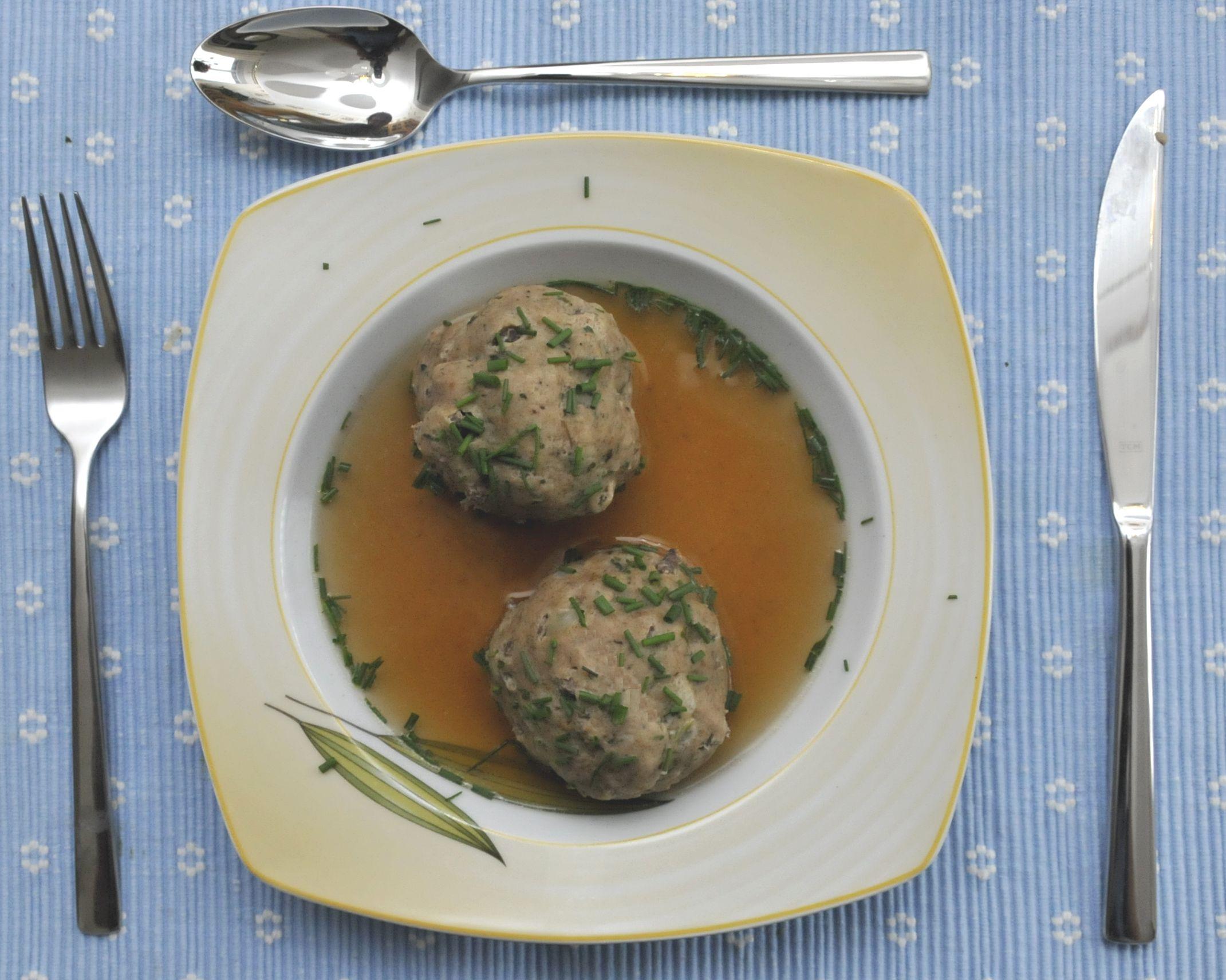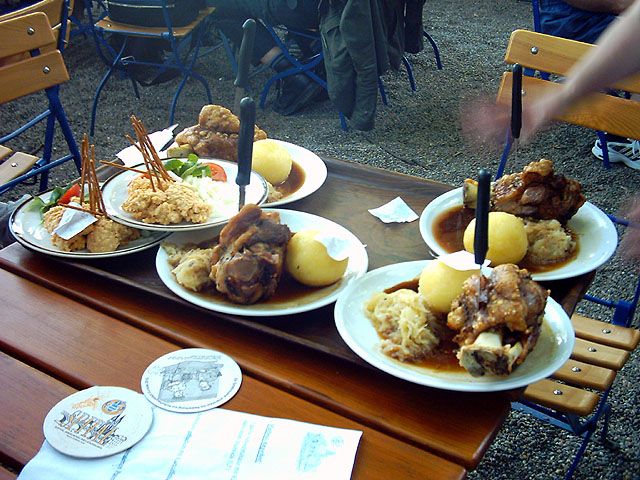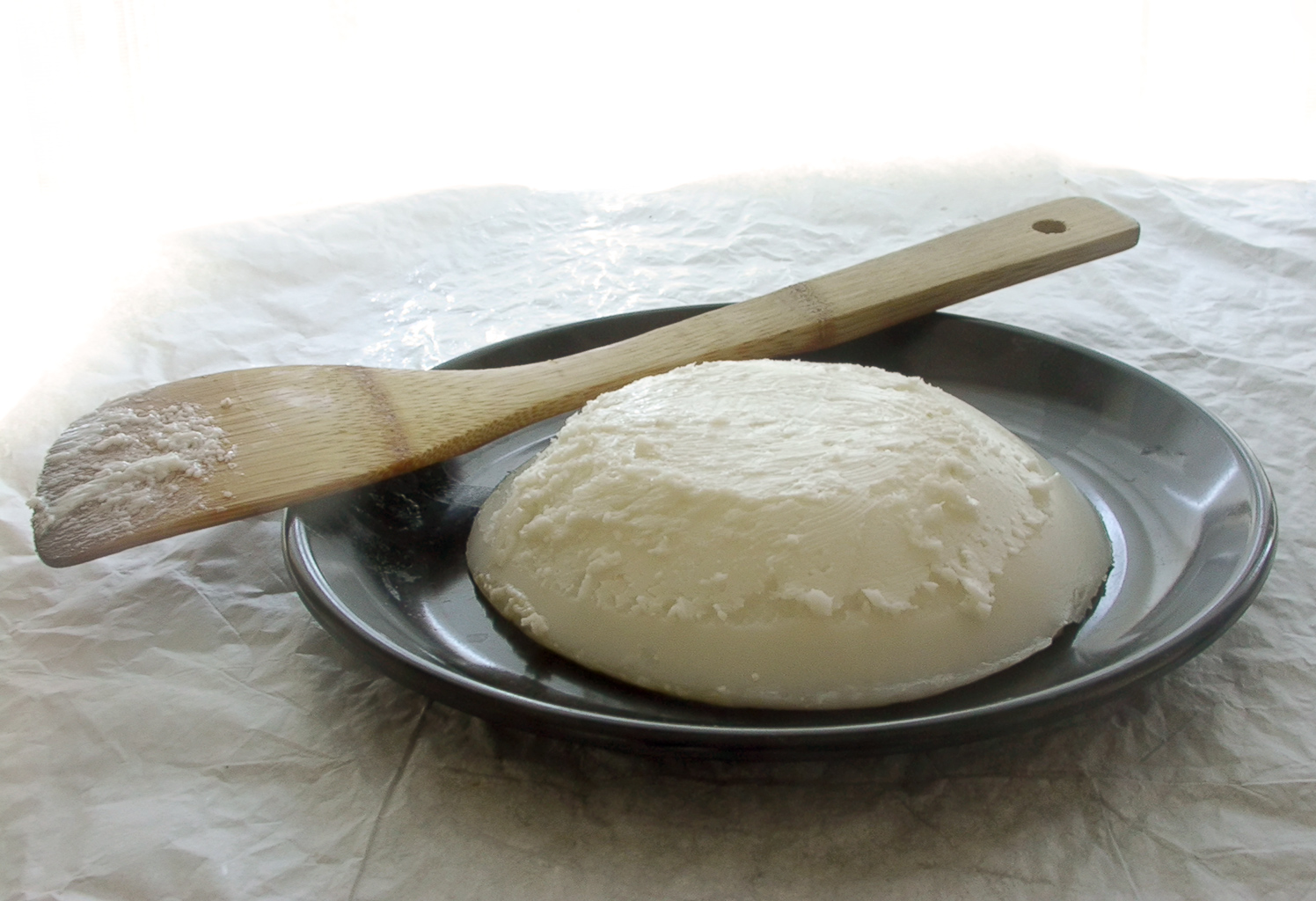|
Leberknödel
Leberknödel is a traditional dish of German, Austrian and Czech cuisines. Leberknödel are usually composed of beef liver, though in the German Palatinate region pork is used as an alternative. The meat is ground and mixed with bread, eggs, parsley and various spices, often nutmeg or marjoram. In Austria spleen is often mixed with the liver in a 1/3 ratio. Using 2 moistened tablespoons, the batter is formed into dumplings and boiled in beef broth or fried in lard. Due to their looser consistency, the boiled dumplings are meant to be eaten fresh after preparation, although the fried variant are somewhat less perishable due to the crust formed by frying. In the Palatinate, Leberknödel are often served with sauerkraut and mashed potatoes. In Bavaria and Austria they are usually served in soup as ''Leberknödelsuppe'' (Liver dumpling soup). See also *Knödel *Bavarian cuisine * List of meatball dishes This is a list of notable meatball dishes. A meatball is ground or minc ... [...More Info...] [...Related Items...] OR: [Wikipedia] [Google] [Baidu] |
Knödel
Knödel (; and ) or Klöße (; ) are boiled dumplings commonly found in Central European and East European cuisine. Central European countries in which their variant of ''Knödel'' is popular include Austria, Germany, Hungary, Poland, Romania, Bosnia, Croatia, Serbia, Slovenia, Slovakia, Bulgaria and Czechia. They are also found in Scandinavian, Romanian, northeastern Italian cuisine, Ukrainian and Belarusian cuisines. Usually made from flour, bread or potatoes, they are often served as a side dish, but can also be a dessert such as plum dumplings, or even meat balls in soup. Many varieties and variations exist. Etymology The word is German and is cognate with the English word ''knot'' and the Latin word 'knot'. Through the Old High German and the Middle High German it finally changed to the modern expression. Knödel in Hungary are called or ; in Slovenia, or (less specifically) ; in the Czech Republic, (singular ); in Slovakia, (singular ); in Luxembourg, ; in B ... [...More Info...] [...Related Items...] OR: [Wikipedia] [Google] [Baidu] |
Palatinate (region)
The Palatinate (german: Pfalz; Palatine German: ''Palz'') is a region of Germany. In the Middle Ages it was known as the Rhenish Palatinate (''Rheinpfalz'') and Lower Palatinate (''Unterpfalz''), which strictly speaking designated only the western part of the Electorate of the Palatinate (''Kurfürstentum Pfalz''), as opposed to the Upper Palatinate (''Oberpfalz''). It occupies roughly the southernmost quarter of the German federal state of Rhineland-Palatinate (''Rheinland-Pfalz''), covering an area of with about 1.4 million inhabitants. Its residents are known as Palatines (''Pfälzer''). Geography The Palatinate borders Saarland in the west, historically also comprising the state's Saarpfalz District. In the northwest, the Hunsrück mountain range forms the border with the Rhineland region. The eastern border with Hesse and the Baden region runs along the Upper Rhine river, while the left bank, with Mainz and Worms as well as the Selz basin around Alzey, belong to ... [...More Info...] [...Related Items...] OR: [Wikipedia] [Google] [Baidu] |
Bavarian Cuisine
Bavarian cuisine is a style of cooking from Bavaria, Germany. Bavarian cuisine includes many meat and Knödel dishes, and often uses flour. Due to its rural conditions and cold climate, only crops such as beets and potatoes do well in Bavaria, being a staple in the German diet. The Bavarian dukes, especially the Wittelsbach family, developed Bavarian cuisine and refined it to be presentable to the royal court. This cuisine has belonged to wealthy households, especially in cities, since the 19th century. The (old) Bavarian cuisine is closely connected to Czech cuisine and Austrian cuisine (especially from Tyrol and Salzburg), mainly through the families Wittelsbach and Habsburg. Already in the beginning, Bavarians were closely connected to their neighbours in Austria through linguistic, cultural and political similarities, which also reflected on the cuisine. A characteristic Bavarian cuisine was further developed by both groups, with a distinct similarity to Franconian and ... [...More Info...] [...Related Items...] OR: [Wikipedia] [Google] [Baidu] |
Austrian Cuisine
Austrian cuisine () is a style of cuisine native to Austria and composed of influences from Central Europe and throughout the former Austro-Hungarian Empire. Austrian cuisine is most often associated with Viennese cuisine, but there are significant regional variations. Mealtimes Breakfast is of the "continental" type, usually consisting of bread rolls with either jam or cold meats and cheese, accompanied by coffee, tea or juice. The midday meal was traditionally the main meal of the day, but in modern times as Austrians work longer hours further from home this is no longer the case. The main meal is now often taken in the evening. A mid-morning or mid-afternoon snack of a slice of bread topped with cheese or ham is referred to as a ''Jause''; a more substantial version akin to a British "ploughman's lunch" is called a ''Brettljause'' after the wooden board on which it is traditionally served. Popular dishes of Vienna * ''Rindsuppe'' (beef soup), a clear soup with gold ... [...More Info...] [...Related Items...] OR: [Wikipedia] [Google] [Baidu] |
List Of Meatball Dishes
This is a list of notable meatball dishes. A meatball is ground or minced meat rolled into a small ball, sometimes along with other ingredients, such as bread crumbs, minced onion, eggs, butter, and seasoning. Meatballs are cooked by frying, baking, steaming, or braising in sauce. There are many types of meatballs using different types of meats and spices, and most cuisines have a version of the dish. Meatball dishes * Bakso – an Indonesian meatball or meat paste made from beef surimi. * Bakso Bakar Malang - Roasted Bakso dish from Malang City, Indonesia. Usually served with spicy sauce. * Beef ball * Bitterballen – a Dutch meatball prepared using beef or veal and other ingredients * Chiftele * Faggot – a dish in the United Kingdom typically consisting of minced pork liver and heart, wrapped in bacon, with onion and breadcrumbs. It is often cooked in a crock with gravy and served with peas and mashed potatoes. Faggots can also be made with beef. * Fish ba ... [...More Info...] [...Related Items...] OR: [Wikipedia] [Google] [Baidu] |
Spleen
The spleen is an organ found in almost all vertebrates. Similar in structure to a large lymph node, it acts primarily as a blood filter. The word spleen comes .σπλήν Henry George Liddell, Robert Scott, ''A Greek-English Lexicon'', on Perseus Digital Library The spleen plays very important roles in regard to red blood cells (erythrocytes) and the . It removes old red blood cells and holds a reserve of blood, which can be valuable in case of [...More Info...] [...Related Items...] OR: [Wikipedia] [Google] [Baidu] |
Meatballs
A meatball is ground meat rolled into a ball, sometimes along with other ingredients, such as bread crumbs, minced onion, eggs, butter, and seasoning. Meatballs are cooked by frying, baking, steaming, or braising in sauce. There are many types of meatballs using different types of meats and spices. The term is sometimes extended to meatless versions based on vegetables or fish; the latter are also commonly known as fishballs. History The ancient Roman cookbook ''Apicius'' included many meatball-type recipes. Early recipes included in some of the earliest known Persian cookbooks generally feature seasoned lamb rolled into orange-sized balls and glazed with egg yolk and sometimes saffron. This method was taken to the West and is referred to as gilding. Many regional variations exist, including the unusually large ''kufte Tabrīzī'' from Iran's northwestern region, with an average diameter of . ''Poume d'oranges'' is a gilded meatball dish from the Middle Ages. By region ... [...More Info...] [...Related Items...] OR: [Wikipedia] [Google] [Baidu] |
Mashed Potatoes
Mashed potato or mashed potatoes ( American and Canadian English), colloquially known as mash (British English), is a dish made by mashing boiled or steamed potatoes, usually with added milk, butter, salt and pepper. It is generally served as a side dish to meat or vegetables. Roughly mashed potatoes are sometimes called smashed potatoes. Dehydrated instant mashed potatoes and frozen mashed potatoes are available. Mashed potatoes are an ingredient in other dishes, such as dumplings and gnocchi. Ingredients Most authors recommend the use of "floury" potatoes with a high ratio of amylose in their starch to achieve a fluffy, creamy consistency and appearance. The best-known floury varieties are King Edward, golden wonder, and red rascal in Britain and the Russet in North America. However, some recipes use "waxy" potatoes containing more amylopectin in their starch for a different texture or look; for instance, one pounded mashed potato dish from Yunnan cuisine (in southwes ... [...More Info...] [...Related Items...] OR: [Wikipedia] [Google] [Baidu] |
Sauerkraut
Sauerkraut (; , "sour cabbage") is finely cut raw cabbage that has been fermented by various lactic acid bacteria. It has a long shelf life and a distinctive sour flavor, both of which result from the lactic acid formed when the bacteria ferment the sugars in the cabbage leaves.Gil MarksEncyclopedia of Jewish Food p. 1052.Joseph Mercola, Brian Vaszily, Kendra Pearsall, Nancy Lee BentleyDr. Mercola's Total Health Cookbook & Program p. 227. It is one of the best-known national dishes in Germany. Although in English-speaking countries it is known under its German name, it is also widely known in Eastern Europe and other places (see below). For example, in Russia, () 'sour cabbage' or () 'fermented cabbage' has been a traditional and ubiquitous dish from ancient times. Overview and history Fermented foods have a long history in many cultures, with sauerkraut being one of the most well-known instances of traditional fermented moist cabbage side dishes. The Roman writers C ... [...More Info...] [...Related Items...] OR: [Wikipedia] [Google] [Baidu] |
Lard
Lard is a semi-solid white fat product obtained by rendering the fatty tissue of a pig.Lard entry in the online ''Merriam-Webster Dictionary''. Accessed on 2020-07-05. It is distinguished from tallow, a similar product derived from fat of or . Lard can be rendered by steaming, boiling, or dry heat. The culinary qualities of lard vary somewhat depending on the origin and processing method; if properly rendered, it may be nearly odorless and tasteless.E. S. Clifton, Joseph Kastelic, and Belle Lowe (1955): ''Relati ... [...More Info...] [...Related Items...] OR: [Wikipedia] [Google] [Baidu] |
Broth
Broth, also known as bouillon (), is a savory liquid made of water in which meat, fish or vegetables have been simmered for a short period of time. It can be eaten alone, but it is most commonly used to prepare other dishes, such as soups, gravies, and sauces. Commercially prepared liquid broths are available, typically chicken, beef, fish, and vegetable varieties. Dehydrated broth in the form of bouillon cubes were commercialized beginning in the early 20th century. Broths have been used as a nutrition source for the sick in Great Britain since at least the early 1700s, such as for dysentery patients. Stock versus broth Many cooks and food writers use the terms ''broth'' and ''stock'' interchangeably. In 1974, James Beard wrote that stock, broth, and bouillon "are all the same thing". While many draw a distinction between stock and broth, the details of the distinction often differ. One possibility is that stocks are made primarily from animal bones, as opposed to ... [...More Info...] [...Related Items...] OR: [Wikipedia] [Google] [Baidu] |









